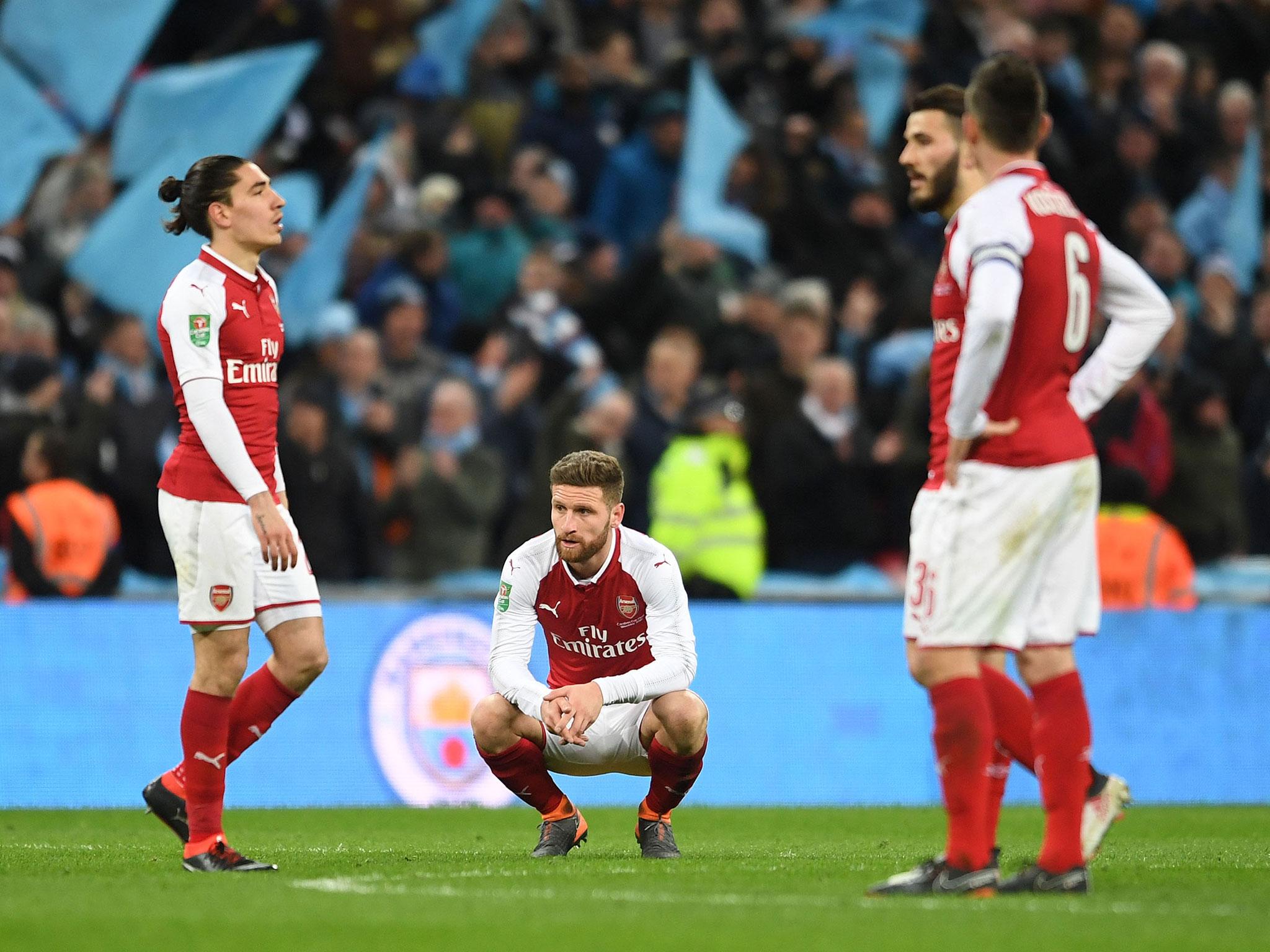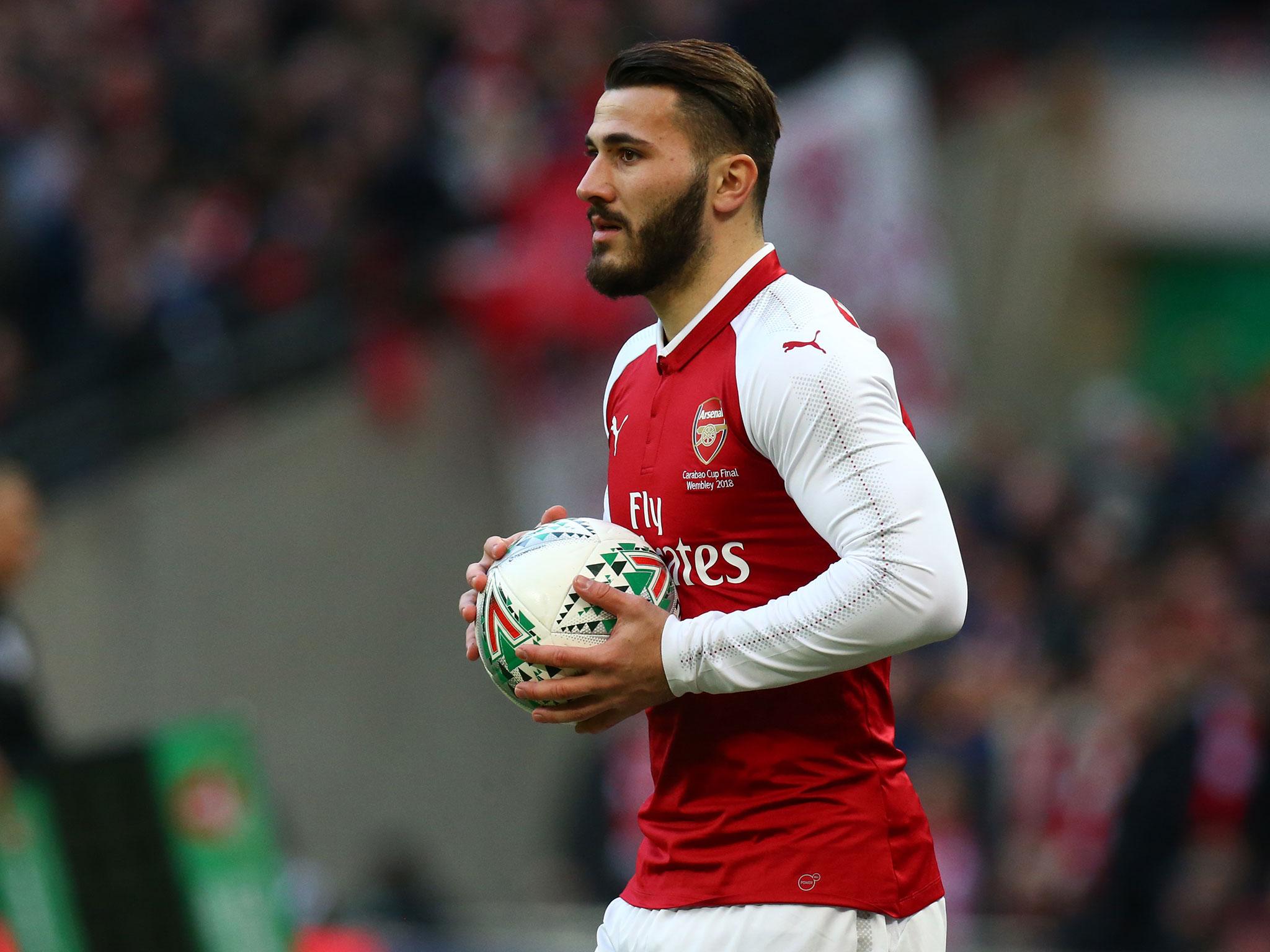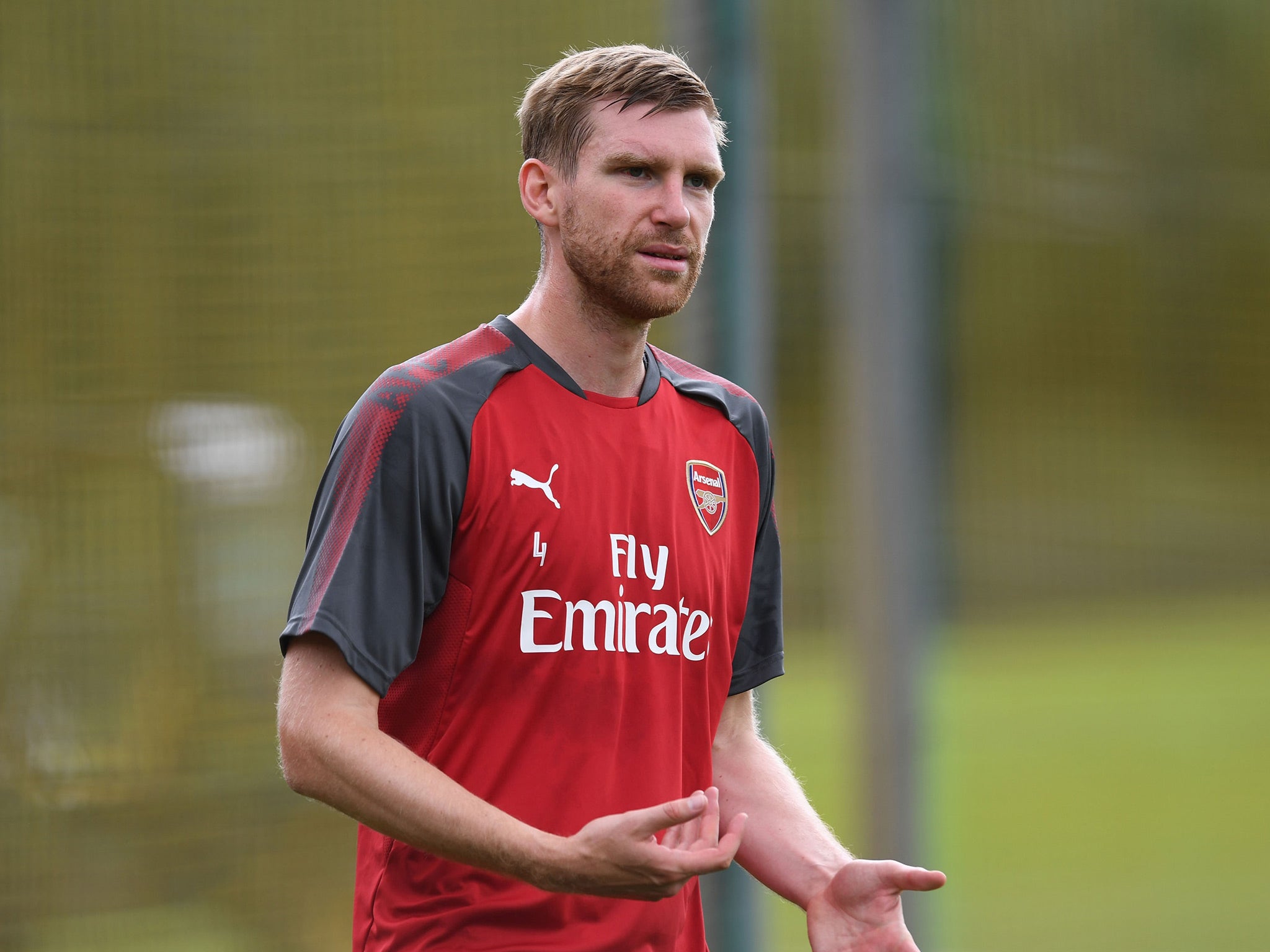Arsenal's calamitous defence a classic case of arrested development under Arsene Wenger
So many of Arsenal's defenders have become laughing stocks in recent years. But the reality is that if it happens with this many different players, the joke shouldn’t be on them

Your support helps us to tell the story
From reproductive rights to climate change to Big Tech, The Independent is on the ground when the story is developing. Whether it's investigating the financials of Elon Musk's pro-Trump PAC or producing our latest documentary, 'The A Word', which shines a light on the American women fighting for reproductive rights, we know how important it is to parse out the facts from the messaging.
At such a critical moment in US history, we need reporters on the ground. Your donation allows us to keep sending journalists to speak to both sides of the story.
The Independent is trusted by Americans across the entire political spectrum. And unlike many other quality news outlets, we choose not to lock Americans out of our reporting and analysis with paywalls. We believe quality journalism should be available to everyone, paid for by those who can afford it.
Your support makes all the difference.It was the type of call, or just the type of savvy, that Shkodran Mustafi could really have done with on Sunday. Back in the days when Arsenal’s backline were more responsible for winning trophies so assuredly rather than losing matches so calamitously, Tony Adams used to have a little routine he would go through any time he would sense a bit of danger, or just a test in a tight game.
“Drop back 10 yards boys,” the captain would shout. “Earn the win! Earn the win.”
The point here is not to say that’s what Mustafi should have done for that fatal first goal on Sunday, given that there were very relevant wider reasons why he was so high up, but rather to indicate the inherent difference in instinct. Adams just knew what to do in a given situation. Mustafi looked like he did not.
Having stepped out, the Germany was quickly outwitted by Sergio Aguero and left to look out of his depth.
The belated use of Sead Kolasinac was just as telling. This was a player who had been lionised for his initial performances as a left-sided centre-half for Arsenal, only to be again left out when they returned to a three-man backline on Sunday.
That is not the first time that has happened to an Arsenal defender either, even if Kolasinac isn’t a traditional centre-half. The point is that there was something that could have been developed there, but an opportunity that wasn’t taken. The opposite happened. He has faded.
Difficult as it is to picture now, the exact same happened with Thomas Vermaelen, Philippe Senderos, Johan Djourou, Gabriel Paulista, Calum Chambers and Rob Holding. All of them earned quite a lot of praise for their first few Arsenal performances, only to eventually be derided, some of them becoming near joke figures.
The reality is that if it happens with this many different players, the joke shouldn’t really be on them. It also cuts against the granite on-pitch seriousness of so many great Arsenal centre-halves like Adams, David O’Leary, Sol Campbell, Steve Bould, Martin Keown and Frank McLintock.

This is a less welcome development.
The club that was arguably England’s most famous for rock-hard centre-halves has instead become infamous for their unreliability.
There is an argument that this is Arsene Wenger’s biggest problem position, and one only bolstered when you think of the amount of times his side have imploded.
Just think, too, of the amount of centre-halves that have played under him. Wenger has used 28 with any kind of regularity since he first arrived in north London in 1996 and brought in 22 of those, but it’s difficult to think of more than three of the latter who actually became better defenders under him. That arguably only applies to Sol Campbell, Kolo Toure and Laurent Koscielny.
Even with Koscielny, though, one high-profile figure at the club recently complained that he “isn’t as reliable as he should be”.
It’s also highly telling that Per Mertesacker is still the defender – actually, the player – who Wenger is said to trust more than any other. The German was just a few weeks off his 27th birthday when he signed in 2011, so had effectively learned all he could, and was the finished product.

This is key, as it is pretty much the starting point for this whole debate. Many around the club feel that Wenger just does not give developing centre-halves the coaching they require. There just isn’t the instruction or direction needed. They are left to it, in so many ways.
One figure who has previously worked with the first team points to the example of Djorou, who is now at Antalyaspor. The Swiss defender was just 19 when he began to get regular football at Arsenal, and the feeling is that he had many of the fundamental attributes to be a good centre-half, but that they weren’t properly nurtured. Rather than regular football at that age finishing a young player as a pro, it instead just stopped his growth. Djorou’s skills weren’t honed, and he never learned some of the exacting qualities that only come with guided experience.
Bould was notionally brought in as assistant for specifically this purpose, but the “big mistake” of the first goal against Manchester City on Sunday – as Wenger himself described – actually showed the limits of any little guidance he can give the players.
While Mustafi could have done with more nous, the problem was that he wasn’t just trying to cover Aguero. He was trying to cover about 50 yards of space in front of him, that didn’t have a single Arsenal player in it.
This multiplies the issue. Arsenal’s broader structure as a team can make it even more difficult for centre-halves. It further exposes them, and that’s even before we get to the ongoing issue of defensive midfield – something connected to this discussion but almost too big for it. If some of the centre-halves are still learning their trade, then, that structural problem can thereby make some of these matches traumatic rather than just harsh learning experiences.
Wenger has similarly admitted in the past to having to leave players out of his team, in order to take them out of the firing line, and it should set alarms off that it even gets to the point where he admits to this.
They are not encouraging noises. It’s also hard not to think it is one big reason why the enduring picture of an Arsenal centre-half has changed. They have gone from some of the hardest-edged players in the game to the disorganised, calamitous figures seen on Sunday.
Join our commenting forum
Join thought-provoking conversations, follow other Independent readers and see their replies
Comments